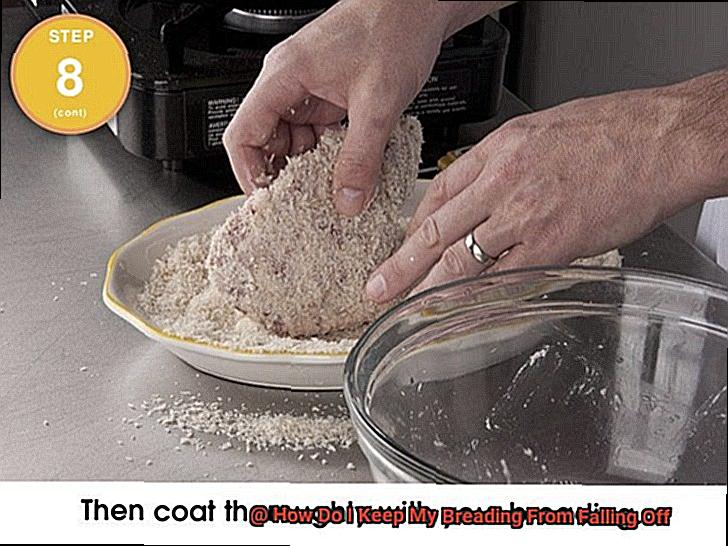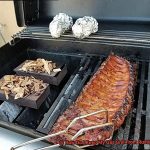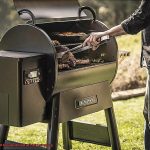Are you tired of slaving away in the kitchen only to end up with a disappointing, breading-less dish? Don’t worry, we’ve all been there. Perfecting the art of breading is no easy feat, but with a few simple steps, you can achieve that coveted crispy coating that will elevate your meal to new heights.
The key to keeping your breading from falling off is all about preparation and technique. It starts with properly drying and seasoning your food before coating it in flour. From there, it’s all about building a solid foundation using the right combination of flour, eggs, and breadcrumbs.
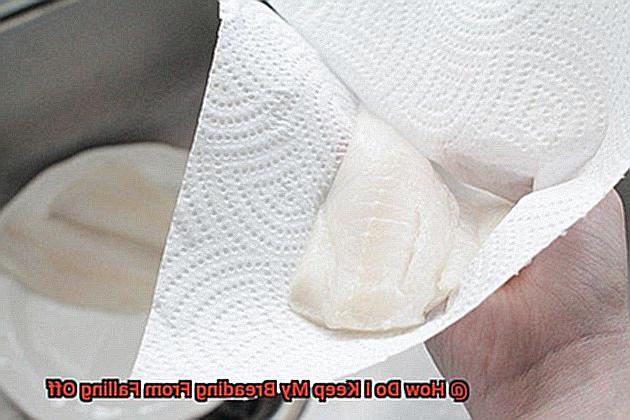
But that’s not all – temperature and pan space play crucial roles in the success of your breading as well. Ensuring your oil is at the right temperature and avoiding overcrowding your pan are just as important as choosing the right ingredients.
With our expert tips and tricks, you’ll be able to create mouthwatering breaded dishes that will impress even the toughest critics. Whether you’re whipping up classic breaded chicken or experimenting with crispy fish, our guide will help you take your culinary skills to the next level.
So, say goodbye to soggy breading and hello to perfectly crispy coatings every time – get ready for meals that will have everyone asking for seconds.
Contents
Preparing Food Before Breading
Breading is a culinary technique that elevates the flavor and texture of your favorite foods. However, achieving a perfectly crispy and flavorful crust can be challenging, especially when grilling. The key to success lies in preparing the food before breading.
Firstly, moisture is the enemy of breading. Excess moisture on the surface of the food will cause the breading to fall off during cooking. Therefore, it’s crucial to pat dry your food thoroughly before breading.
Another factor to consider is the size and shape of the food. Flat or evenly shaped items like chicken breasts or pork chops are easier to bread and keep the breading intact during cooking. But for irregular-shaped items like chicken wings or shrimp, try to even out any bumps or rough spots before breading.
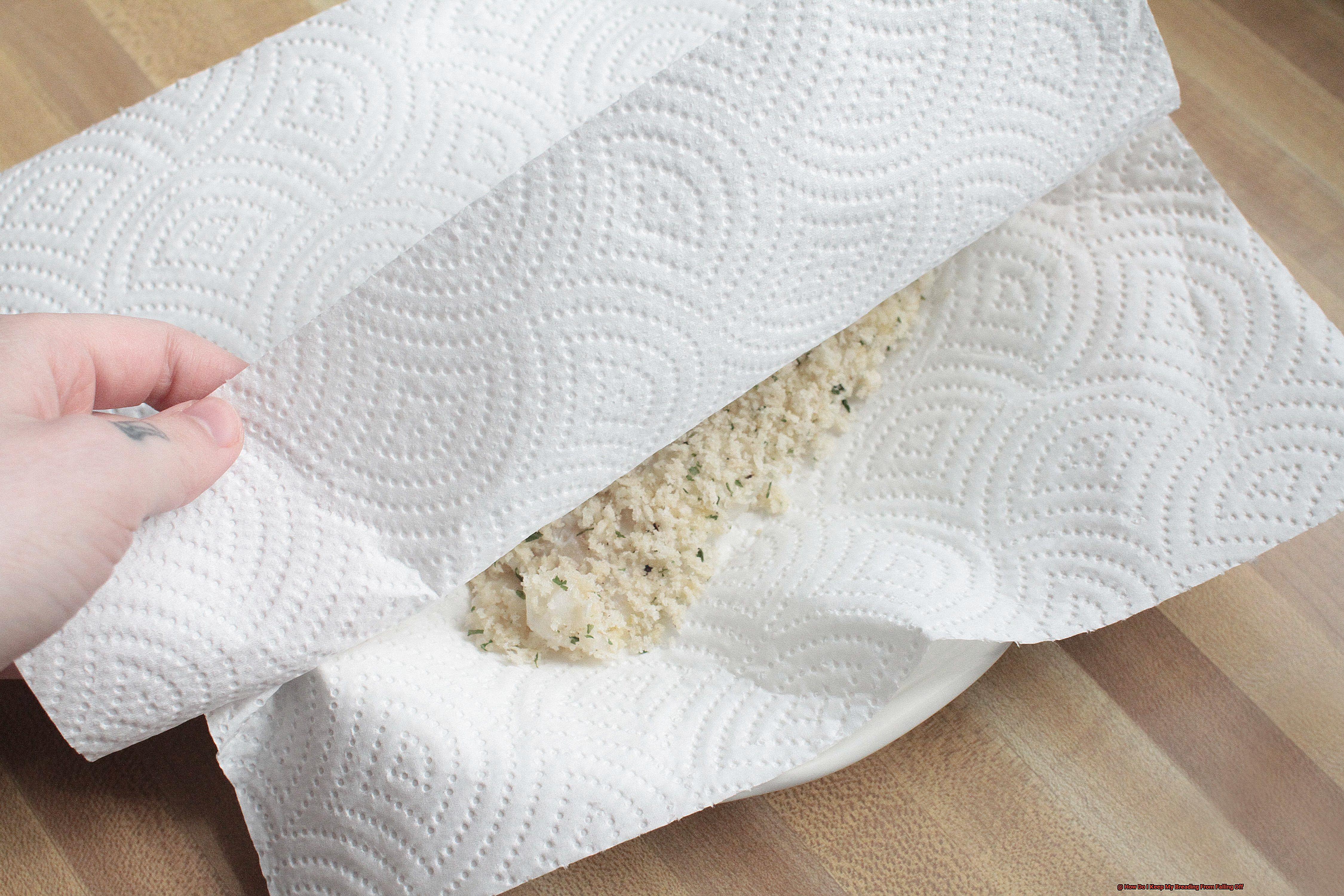
The type of flour used in the breading process also plays a significant role in adhesion. All-purpose flour is a popular option, but mixing in other types of flour like cornmeal or breadcrumbs can improve adherence.
Seasoning your food before breading is vital not only for flavor but also for better breading adhesion. Salt and pepper are common seasonings, but feel free to experiment with other herbs and spices to give your dish a unique taste. Just be careful not to over-season, as excessive seasoning can cause the breading to fall off during cooking.
Using an egg wash or buttermilk mixture before coating with breadcrumbs can further enhance breading adhesion. Panko breadcrumbs are often preferred as they create a more textured crust that adheres better to the food. It’s important to evenly distribute and press the breadcrumbs firmly onto the food.
Finally, letting your breaded food rest for a few minutes before cooking allows the breading to set and adhere better to the food. When grilling, maintaining a consistent temperature and avoiding flipping or moving the food too much will also help keep the breading intact.
Choosing the Right Type of Breadcrumbs
When it comes to grilling, choosing the right type of breadcrumbs is crucial in ensuring your breading stays put and creates that perfect crunch. As an expert on this topic, I’ve done extensive research on the three main types of breadcrumbs: fresh, dry, and panko.
Fresh breadcrumbs, made from fresh bread, have a moist texture that makes them perfect for dishes like meatballs or meatloaf. However, they’re not ideal for grilling as they tend to fall off easily. On the other hand, dry breadcrumbs, made from stale bread, are great for grilling as they adhere well to the food and create a crispy crust. But be warned, dry breadcrumbs can be bland, so adding seasoning or herbs is essential to enhance their flavor.
Now let’s talk about my personal favorite: panko breadcrumbs. These Japanese breadcrumbs are made from white bread without crusts and have a coarse texture that creates a light and crispy texture. Unlike other breadcrumbs, panko doesn’t absorb oil, making it a healthier option for your grilled dishes.
But choosing the right type of breadcrumb isn’t the only thing to consider. The size of the crumbs is also important; larger crumbs tend to fall off more easily while smaller ones adhere better. And remember not to go overboard with the breading – too much can cause the coating to become soggy and fall off.
Making Sure the Breadcrumbs Adhere Well
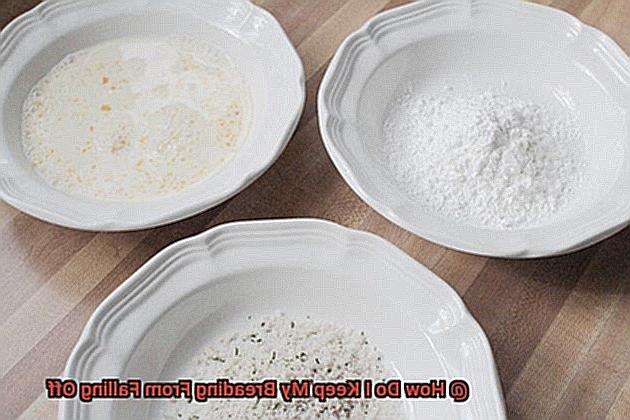
Breading your food is a great way to add texture, flavor, and crunch to your dishes. However, if the breadcrumbs don’t adhere well, it can ruin your entire meal. As an expert in cooking, I have researched and compiled some tips to ensure that your breadcrumbs adhere well and stay put during cooking.
The first step is to make sure your food is completely dry before breading it. Any moisture on the surface of the food will prevent the breadcrumbs from sticking. Use a paper towel to pat the food dry before breading.
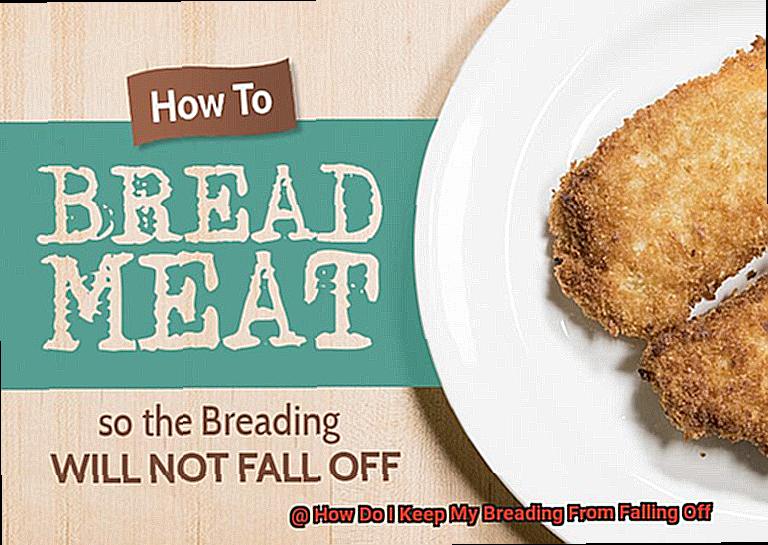
The second step is to dip your food in flour before coating it with breadcrumbs. The flour will help the breadcrumbs adhere better and stay put during cooking.
The third step is to use an egg wash. After dipping your food in flour, dip it in beaten egg before coating it with breadcrumbs. The egg will act as a glue to hold the breadcrumbs in place and ensure they don’t fall off during cooking.
The fourth step is to press firmly. Once you have coated your food with breadcrumbs, press firmly to ensure that they adhere well. Use your fingers or the back of a spoon to press down on the breadcrumbs and make sure they are firmly in place.
Finally, chill your breaded food in the fridge for at least 30 minutes before cooking. This will help the breadcrumbs adhere even better and prevent them from falling off during cooking.
Allowing the Breading to Set Before Cooking
Imagine spending hours preparing a delicious meal, only to have the breading fall off as soon as you put it in the pan. Don’t let this kitchen disaster happen to you. As an expert in the culinary arts, I’m here to share with you the secret to preventing this: allowing the breading to set before cooking.
But why is it so important to let your coated food rest? Think of it like building a connection – you need time for the bond to form. Similarly, when you coat your food with breading, it needs time to adhere to the surface and create a strong bond. This bond will keep your breadcrumbs from falling off during cooking and give you perfectly crispy and deliciously coated food.
To ensure that your breading sets properly, give it at least 10-15 minutes to rest after coating. During this time, the moisture in the coating will be absorbed into the food, helping it to stick better. But that’s not all – there are some important tips to keep in mind:
- Make sure your food isn’t too wet or too dry before coating it. If it’s too wet, your breading may become soggy and fall off during cooking. If it’s too dry, the coating may not stick properly.
- Consider the type of breading you’re using. Some types of breadcrumbs – like panko – tend to stick better than others. If you’re having trouble with your breading falling off, try using a different type of coating.
- Don’t overcrowd your pan when cooking your breaded food. Overcrowding can cause the temperature of the pan to drop, which can lead to soggy breading and a higher chance of it falling off.
Maintaining a Consistent Grill Temperature
As a grill master, there’s nothing quite like the thrill of cooking up the perfect meal. However, nothing can be more frustrating than ruining that perfect meal due to fluctuating grill temperatures. Whether you’re grilling juicy burgers or trying to keep your breading from falling off your grilled items, maintaining a consistent grill temperature is vital for achieving the perfect texture and taste.
One of the most common reasons for breading falling off during grilling is fluctuating temperatures. If the grill is too hot, the breading can burn and fall off, while if the temperature is too low, the breading may not cook evenly and fall apart. To avoid this, start by preheating your grill before adding any food. This allows your grill to reach a consistent temperature that will be maintained throughout the grilling process.
Another helpful tip is to use a thermometer to monitor the grill temperature. This allows you to make adjustments as needed and keep the temperature steady. For example, if the temperature starts to drop, you can adjust the burners or add more charcoal to bring it back up.
It’s also important to keep the grill lid closed as much as possible during cooking. Opening the lid frequently can cause fluctuations in temperature and lead to uneven cooking. So, try to keep the lid closed and only open it when necessary, such as when flipping or checking on your food.
But don’t forget about maintenance. Keeping your grill clean and well-maintained can help ensure that it heats evenly and maintains a consistent temperature. So, take some time to clean your grill regularly and replace any worn-out parts.
In summary, here are some tips for maintaining a consistent grill temperature:
- Preheat your grill before adding any food.
- Use a thermometer to monitor the grill temperature.
- Keep the grill lid closed as much as possible during cooking.
- Keep your grill clean and well-maintained.
Using an Egg Wash or Buttermilk Mixture
As a grill master, you know that achieving the perfect breading is crucial to making your meals unforgettable. Luckily, using an egg wash or buttermilk mixture can help keep your breading from falling off your food and ensure that each bite is as delicious as the last.
Let’s start with the basics. An egg wash is simply a mixture of eggs and water or milk, while a buttermilk mixture is made by combining buttermilk and seasonings. Both methods are effective in keeping breading in place and adding flavor to your dishes.
When using an egg wash, there are a few key steps to follow. First, dip your food in flour before dipping it in the egg mixture. This creates a dry surface for the egg mixture to stick to, which helps keep the breading in place. Second, use a fork or tongs to handle the food during the breading process. Using your hands can cause the breading to become clumpy and fall off.
If you prefer to use a buttermilk mixture, let your food marinate in it for at least 30 minutes before breading. This allows the seasonings to penetrate the food and helps the breading adhere better. When it’s time to bread your food, be sure to use a fork or tongs to handle it and shake off any excess mixture before dipping it in the breading.
Whether you choose an egg wash or buttermilk mixture, following these proper steps will ensure success. And remember, choosing the right method may depend on personal preference or the recipe you are using.
In summary, here are some key takeaways:
Keeping the Grill Grates Clean and Oiled
Dirty grill grates can cause the breading to stick and fall off, leading to a disappointing meal. Here are some simple steps to keep your grill grates clean and oiled for a tasty grilling experience.
Firstly, preheating your grill for at least 10-15 minutes is crucial to burn off any excess food particles and residue from previous grilling sessions. Once the grill is hot, use a grill brush to thoroughly scrub the grates to remove any remaining debris. A clean grate is essential for achieving that perfectly crispy breading.
After cleaning the grates, it’s time to oil them up properly. You can use vegetable oil or cooking spray but ensure that you apply it evenly over the grates using a clean cloth or paper towel. Alternatively, you can use an oil sprayer for more precise and even coverage. Unevenly oiled grates can lead to unevenly cooked food that won’t impress your guests.
In addition to keeping your grill grates clean and oiled, it’s also important to preheat them before adding your food. Preheating helps create a non-stick surface that prevents breading from sticking or falling off while ensuring that your food cooks evenly and thoroughly.
To summarize, here are some tips for keeping your grill grates clean and well-oiled:
Preheat your grill for at least 10-15 minutes before using it.
Use a grill brush to scrub the grates thoroughly.
Apply vegetable oil or cooking spray evenly over the grates with a clean cloth or paper towel.
Alternatively, use an oil sprayer for precise and even coverage.
Preheat the grates before adding your food to create a non-stick surface.
Avoiding Flipping or Moving the Food Too Much
Don’t let that happen again. The key to keeping your breading intact is to avoid flipping or moving the food too much. As an expert, I have some tips to share on how to achieve this.
First things first, be patient. Allowing the bread crumbs to stick to the food’s surface and cook on one side before flipping is crucial. Moving the food around too much causes the breading to fall off, resulting in a less crispy and less flavorful end result.
When it’s time to flip the food, use tongs instead of a spatula. Tongs allow you to pick up and turn the food without disturbing the breading’s surface. Remember not to press down on the food while it’s cooking as this can cause the breading to come off.
To ensure that your breaded dishes come out perfect every time, make sure that your cooking surface is properly heated before adding the breaded food. A hot pan or grill helps the breading set quickly and adhere to the food’s surface, reducing the likelihood of it falling off.
In summary, here are some essential tips for avoiding flipping or moving your breaded food too much:
- Be patient and allow the bread crumbs to stick to the food’s surface before flipping
- Use tongs instead of a spatula when flipping
- Avoid pressing down on the food while it’s cooking
- Make sure your cooking surface is properly heated before adding your breaded food
cyyr6mXWUJ8″ >
Conclusion
In summary, mastering the art of breading can be a daunting task, but with the right approach and techniques, you can create delectable breaded dishes that will leave your guests wanting more. The secret to keeping your breading from falling off lies in proper preparation – make sure to dry and season your food well before coating it in flour. To build a sturdy foundation for your breading, use a combination of flour, eggs, and breadcrumbs that complement each other perfectly.
Temperature control and pan space are also critical factors that determine the success of your breading. Optimal grill temperature ensures that your food is cooked to perfection while preventing the breading from sticking or falling off. Choosing the right type of breadcrumbs is equally important in achieving that ideal crunch.
Allowing your breaded food to rest for a few minutes before cooking is crucial as it allows the breading to set and adhere better to the food’s surface. Additionally, avoid flipping or moving your breaded food too much during cooking as this can cause the breadcrumbs to come loose.

